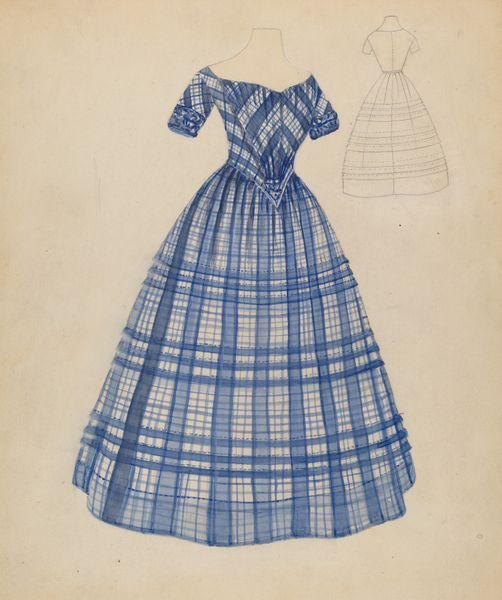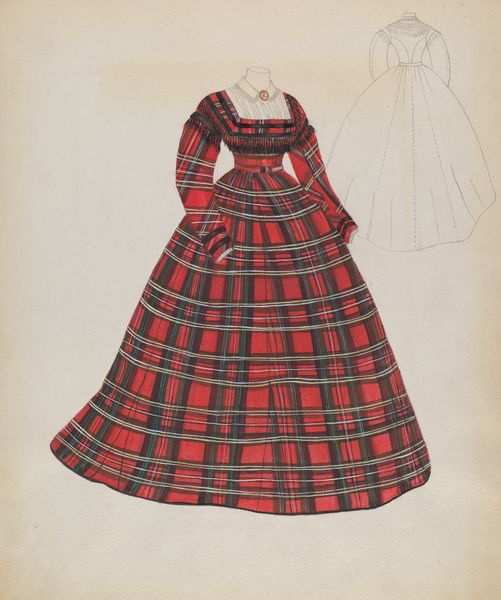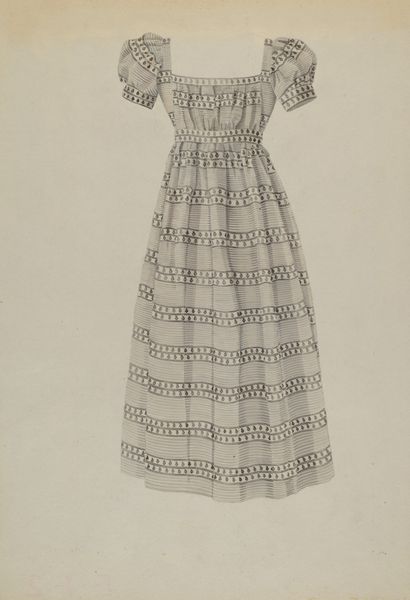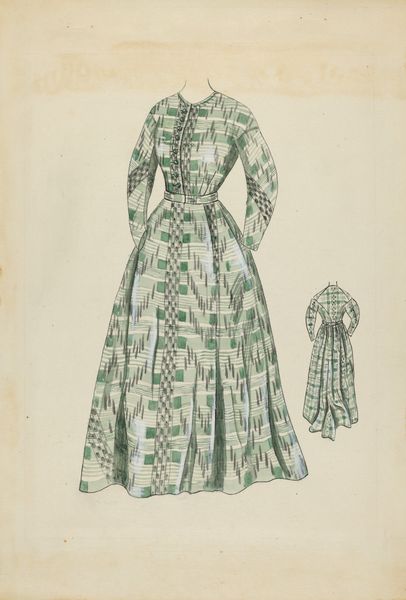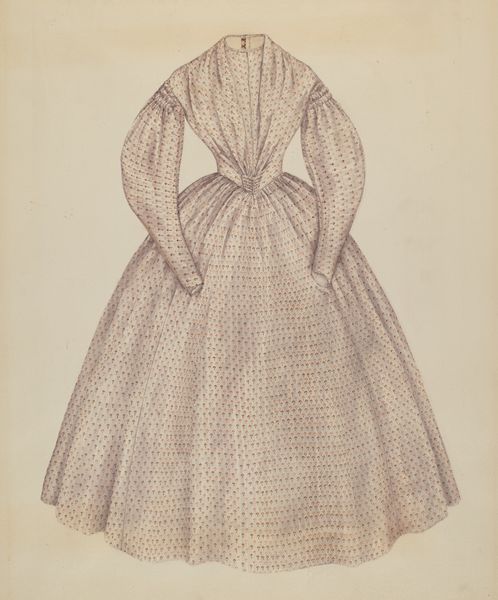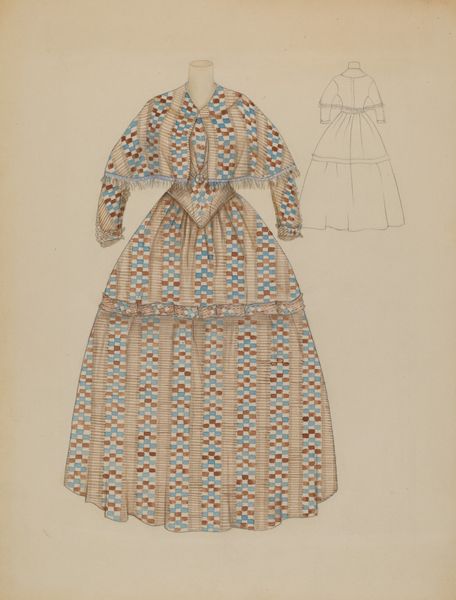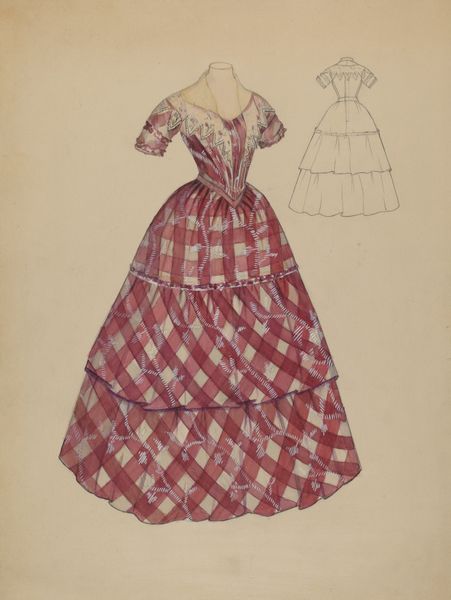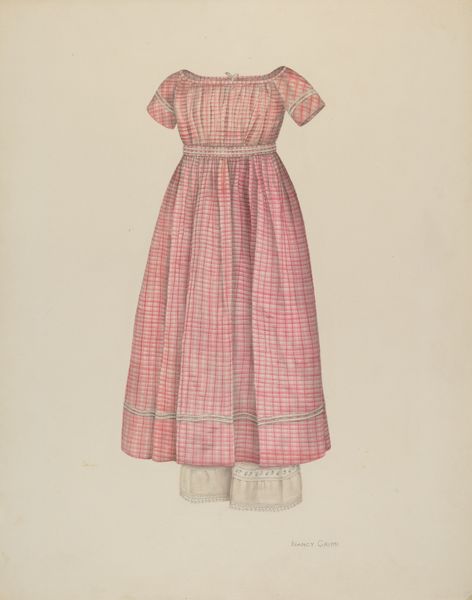
drawing, paper, watercolor
#
drawing
#
underwear fashion design
#
light pencil work
#
fashion and textile design
#
paper
#
personal sketchbook
#
watercolor
#
historical fashion
#
geometric
#
sketchbook drawing
#
watercolour illustration
#
fashion sketch
#
sketchbook art
#
clothing design
Dimensions: overall: 28.5 x 23.9 cm (11 1/4 x 9 7/16 in.) Original IAD Object: skirt: 37" long, 144" wide; bodice: neck to waist: 15 1/2" long; bust: 36"; waist: 27 1/2"
Copyright: National Gallery of Art: CC0 1.0
Curator: Here we have a delicate drawing entitled "Dress," dating to around 1936. The piece is rendered in watercolor and pencil on paper, likely as part of Bessie Forman's personal sketchbook. Editor: The first thing that strikes me is how light and airy it feels, almost dreamlike. The plaid pattern is so neatly rendered, yet the overall effect is gentle, not at all harsh. It reminds me of a soft, diffused memory. Curator: That sense of softness is quite apt. Bessie Forman worked as a costume and set designer in New York during a pivotal era for women both in the workplace and in popular imagery. It’s fascinating to consider this design sketch in the context of the shifting silhouettes of the time, caught between pre-war glamour and the austerity to come. Editor: And plaid itself carries such rich associations. From its historical connection to Scottish clans, symbolizing identity and heritage, to its later adoption in more casual, everyday wear, even punk fashion—the symbolic journey of plaid is quite something, don't you think? In this image, it suggests a certain understated elegance. Curator: Absolutely. Forman's work, even in these quick sketches, speaks to the industrial forces and material conditions that shaped design sensibilities. Looking at the precision of the rendering, it’s hard to ignore the growing role of fashion illustration as a profession, shaping consumer desires and cultural trends in the early 20th century. Editor: I’m also drawn to the pale blue hue. Blue often represents calmness, but also melancholy. The dress appears as a symbol of memory and reflection, perhaps holding hidden hopes and unfulfilled dreams. Curator: That interpretation underscores a valuable point. While mass production and industry standardization grew, handmade drawings allowed space for personal touches, and private meanings that sometimes challenge dominant norms. A single object holding multilayered meanings is quite potent, really. Editor: Indeed. Looking closer at the drawing style itself is like unlocking layers of cultural memories stitched in cloth.
Comments
No comments
Be the first to comment and join the conversation on the ultimate creative platform.
